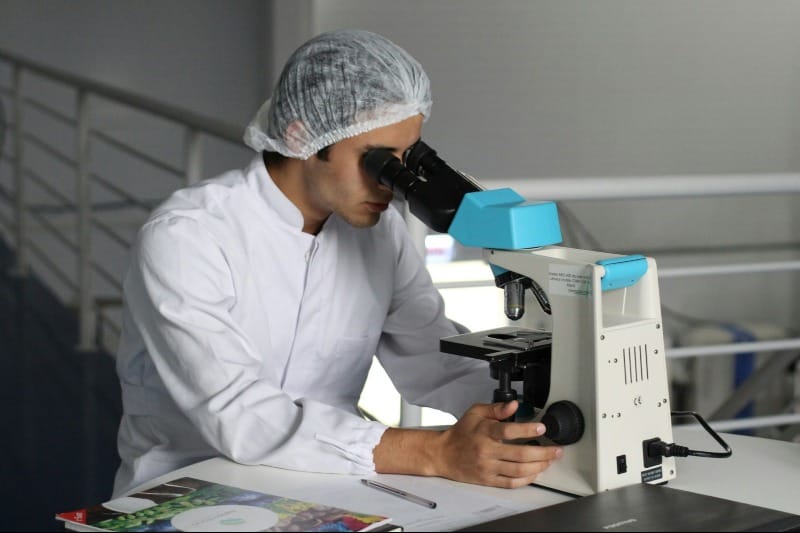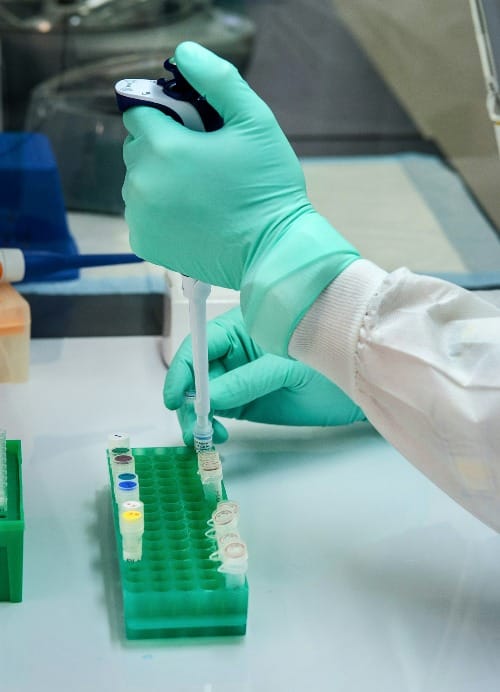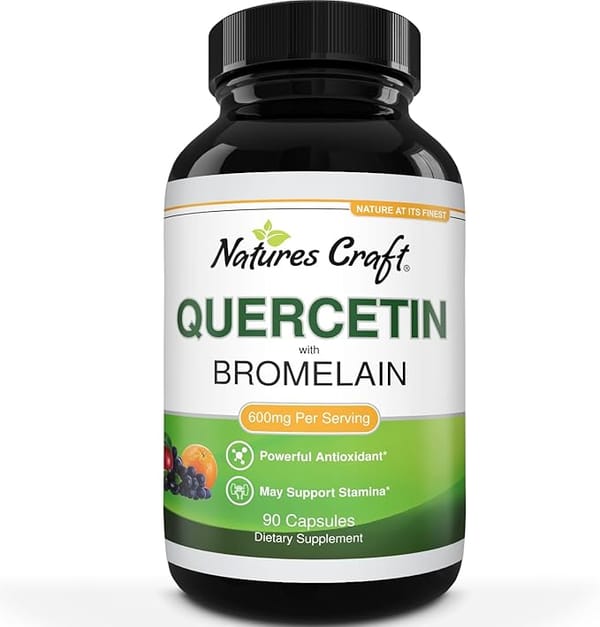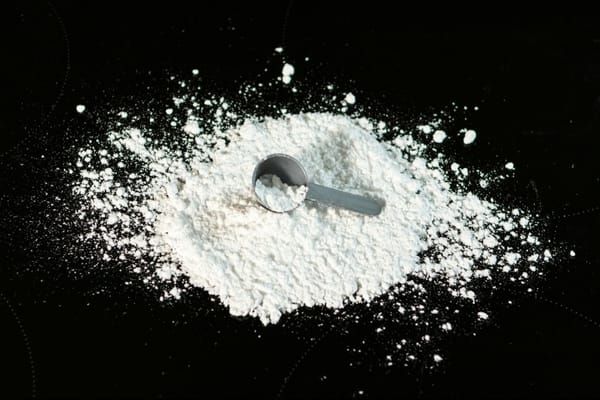TruDiagnostic offers innovative biological test kits that provide deep insights into health status and aging processes at the cellular level, allowing individuals to gain a comprehensive view of their biological age and receive actionable data to improve their overall well-being through targeted lifestyle modifications.
TruDiagnostic Test Option
TruDiagnostic offers two primary test options designed to provide comprehensive insights into biological aging and health:
TruAge COMPLETE
This at-home epigenetic test provides an in-depth analysis of over 75 biomarkers related to aging. It includes detailed reports on telomere length, immune system age, and the impacts of environmental exposures such as smoking and alcohol. The test uses the OMICm Age algorithm, developed in collaboration with scientists from Brigham and Women's Hospital of Harvard Medical School, to break down age-related risks of developing various diseases and mortality. This test is ideal for those starting to track their biological age and seeking a comprehensive overview of their aging metrics[2][3].
TruAge PACE
This test focuses on analyzing the current rate of aging at the cellular level using the DunedinPACE algorithm. It answers the question, "For each calendar year that passes, how many years is my body actually aging?" This test is often used by individuals who have previously used the TruAge COMPLETE kit and now want a simplified way to gauge the success of their aging interventions. It includes reports on the pace of biological aging and telomere length[2][3].
Both tests come with all necessary tools for at-home blood collection, including fingertip lancets, a mini blood spot card, and a prepaid envelope for returning the sample to the laboratory. Users must register their kits online to access their results through the TruDiagnostic user portal[3].
These tests provide actionable insights that can guide lifestyle modifications and medical interventions to improve health outcomes. By understanding their biological age and pace of aging, individuals can make informed decisions about diet, exercise, and other lifestyle factors to optimize their health and longevity[2][3].
Sources:
Biological vs Chronological Age

Biological age and chronological age are two distinct measures of aging that provide different insights into a person's health and longevity.
Chronological age refers to the number of years a person has been alive, calculated from their date of birth to the present[1][2]. It is a straightforward, fixed measure that increases at the same rate for everyone[2]. Chronological age is commonly used to define one's age and is often utilized in studies to measure the risk of age-related health conditions[1].
Biological age, on the other hand, represents the body's internal age and reflects how efficiently it is functioning[1]. It aims to calculate how old a person is internally, taking into account various genetic and lifestyle factors that influence the aging process[1][2]. Biological age is determined by the accumulation of cellular damage and the decreased ability of cells to divide and multiply over time[1].
The key difference between the two is that while chronological age is fixed and uniform for everyone, biological age can vary significantly between individuals of the same chronological age[1][2]. Two people who are chronologically 50 years old may have very different biological ages, depending on factors such as genetics, lifestyle choices, environmental exposures, and overall health status[1][5].
Biological age is considered a more accurate indicator of health and longevity than chronological age[1][5]. It takes into account how well or poorly a person is aging internally based on what's expected for their chronological age[1]. For instance, someone who exercises regularly, maintains a healthy diet, and manages stress effectively may have a biological age lower than their chronological age, indicating better overall health and potentially lower risk for age-related diseases[1][5].
Several methods can be used to estimate biological age, including:
1. Telomere length measurement: Telomeres, the structures at the end of chromosomes, tend to shorten with age. However, the rate of shortening can be influenced by lifestyle factors[1].
2. Epigenetic clocks: These tools measure DNA methylation patterns, which change with age and can be influenced by environmental and lifestyle factors[1][2].
3. Biomarker analysis: Various biomarkers, such as blood pressure, cholesterol levels, and inflammatory markers, can be used to estimate biological age[3].
4. Online surveys: Some websites offer questionnaires that attempt to estimate biological age based on health history and lifestyle factors, though these are less reliable than more scientific methods[1].
It's important to note that while biological age is emerging as a valuable metric for assessing health and predicting age-related risks, the accuracy of biological age calculations can vary depending on the measurement method used[1]. Nonetheless, understanding the concept of biological age can provide valuable insights into one's health status and potentially guide lifestyle modifications to promote healthier aging[1][5].
Reversing Biological Age

The progression of biological age can indeed be slowed down and, in some cases, even reversed through various interventions. Biological age is a more flexible measure of health compared to chronological age, as it can be influenced by lifestyle changes, medical treatments, and environmental factors[1]. Recent studies have shown promising results in reducing biological age through specific treatments and lifestyle modifications.
For instance, appropriate diabetic treatment has been shown to effectively reduce biological age in patients with diabetes mellitus[1]. Additionally, dietary and lifestyle changes supported by methylation analysis have demonstrated significant reductions in biological age, with some individuals experiencing up to an 11-year decrease[1]. These findings suggest that biological age is not a fixed number and can fluctuate based on one's health and lifestyle choices.
Moreover, a study protocol involving the use of NT-proBNP as a surrogate marker for biological age aims to assess the efficacy of four anti-aging treatments, including Coenzyme Q10, Selenium, Resveratrol, and TA-65, in slowing down biological age progression[2][3]. This double-blind randomized placebo-controlled trial on adults aged 65-80 years will provide insights into how these treatments can modify biological age over a two-year period[2][5].
Furthermore, research has indicated that biological age can temporarily increase in response to physiological stress, such as pregnancy, but can revert to baseline levels upon recovery[1]. This highlights the potential for biological age to be modulated by managing stress and other environmental factors.
In summary, slowing down and reversing biological age progression is possible through targeted medical treatments, dietary and lifestyle changes, and effective stress management. These interventions can lead to significant improvements in health and longevity by positively influencing biological age markers[1][2][3].
Understanding Epigenetics
Epigenetics is the study of heritable changes in gene expression that do not involve alterations to the underlying DNA sequence. These changes can be influenced by various environmental factors and lifestyle choices, affecting how genes are turned "on" and "off"[6].
Key aspects of epigenetics include:
1. DNA Methylation: This process involves adding a methyl group to DNA, typically turning genes off. Demethylation removes these groups, turning genes on[6]. Environmental factors can impact the level of DNA methylation, thus affecting protein production in cells.
2. Histone Modifications: Histones are proteins that DNA wraps around. Changes to these proteins can affect how tightly DNA is packaged, influencing gene expression.
3. Plasticity: Unlike genetic mutations, epigenetic changes are reversible and can occur throughout a person's lifetime[6]. This dynamic nature makes epigenetics a promising area for interventions to improve health.
4. Impact on Health: Epigenetic changes can influence various aspects of health, including:
- Disease Risk: Certain epigenetic patterns are associated with increased risk of diseases like cancer[6].
- Immune Function: Some infections can cause epigenetic changes that weaken the immune system[6].
- Aging: Epigenetic changes accumulate with age and can be used to measure biological age[1][3].
- Brain Function: Epigenetics plays a role in memory formation and cognitive processes[9].
5. Lifestyle Influences: Various factors can affect epigenetic patterns:
- Diet: Certain nutrients, like those found in the Mediterranean diet, can positively influence epigenetic markers[7].
- Exercise: Regular physical activity has been shown to cause beneficial epigenetic changes[7].
- Stress: Chronic stress can lead to detrimental epigenetic modifications[7].
- Sleep: Adequate sleep is crucial for maintaining healthy epigenetic patterns[7].
6. Transgenerational Effects: Some epigenetic changes can be passed down to future generations, though this area is still being researched.
Understanding epigenetics provides insights into how lifestyle and environmental factors can influence health at a molecular level. This knowledge can be leveraged to develop personalized health interventions and preventive strategies[8]. For instance, epigenetic testing can reveal an individual's unique epigenetic profile, allowing for tailored lifestyle recommendations to optimize health and potentially mitigate disease risks[9].
Sources:
Insights from Test Results

TruDiagnostic's test results offer a wealth of insights that can significantly impact an individual's health and wellness journey. By analyzing various biomarkers and epigenetic patterns, these tests provide a detailed picture of one's biological age and the rate at which their body is aging.
1. Biological Age Determination: The TruAge COMPLETE test reveals an individual's biological age by examining over 75 biomarkers, including telomere length, immune system age, and the impacts of environmental exposures like smoking and alcohol[2][3]. This comprehensive analysis helps users understand how their lifestyle and genetic factors are influencing their aging process.
2. Pace of Aging: The TruAge PACE test focuses on the rate of aging, using the DunedinPACE algorithm to determine how quickly or slowly the body is aging compared to the chronological age[2]. This insight is crucial for identifying whether one's current lifestyle is accelerating or decelerating the aging process.
3. Disease Risk Assessment: The OMICm Age algorithm, developed in collaboration with Harvard Medical School, helps predict the risk of developing age-related diseases[2]. By understanding these risks, individuals can take proactive measures to mitigate potential health issues.
4. Actionable Health Insights: The test results provide actionable recommendations based on the epigenetic data. For instance, if the results indicate accelerated aging, users may be advised to adopt specific lifestyle changes such as improving diet, increasing physical activity, or implementing stress reduction techniques[1][8].
5. Personalized Health Interventions: Healthcare providers can use the detailed reports to tailor medical treatments and preventive strategies to each individual's unique epigenetic profile. This personalized approach ensures that interventions are more effective and aligned with the patient's specific health needs[8].
6. Tracking Progress: Individuals can monitor the effectiveness of their lifestyle changes by retesting after a period of implementing recommended interventions. This allows for continuous optimization of health strategies based on updated biological age and pace of aging metrics[3].
7. Educational Value: The insights gained from these tests educate users about the impact of their daily choices on their genetic expression and overall health. This knowledge empowers them to make informed decisions that promote longevity and well-being[9].
By leveraging the detailed insights from TruDiagnostic's test results, individuals can gain a deeper understanding of their health status and take targeted actions to improve their biological age and overall health outcomes.
Sources:
Improving Health Actions

TruDiagnostic's biological test kits provide actionable data that can significantly enhance health actions and outcomes. By leveraging insights from these tests, individuals can implement targeted lifestyle changes to improve their overall well-being and potentially reverse biological aging.
1. Dietary Adjustments: The test results can reveal specific nutritional deficiencies or dietary patterns that may be accelerating biological aging. For instance, incorporating more omega-3 fatty acids, found in oily fish and nuts, can reduce inflammation and support healthy aging[7]. Adopting a Mediterranean-style diet, rich in vegetables, whole grains, and healthy fats, has been shown to lower mortality rates and improve brain health[7].
2. Exercise Regimens: Regular physical activity is crucial for maintaining a healthy biological age. TruDiagnostic's insights can help tailor exercise programs to individual needs. Moderate-intensity resistance training, for example, can be as effective as medication in lowering blood pressure and improving overall health[7]. Consistent exercise can also positively influence epigenetic markers linked to inflammation and stress response[8].
3. Stress Management: Chronic stress can lead to detrimental epigenetic changes that accelerate aging. Techniques such as mindfulness meditation, deep breathing exercises, and journaling can help manage stress and improve epigenetic expression[8]. Reducing stress can also enhance immune function and decrease the risk of age-related diseases[6].
4. Sleep Optimization: Adequate sleep is essential for maintaining healthy epigenetic patterns. TruDiagnostic's data can highlight the impact of sleep on biological age, encouraging individuals to prioritize getting sufficient rest. Poor sleep has been linked to increased inflammatory markers and higher risks of cardiovascular diseases and diabetes[7].
5. Environmental Modifications: Exposure to environmental toxins and pollutants can negatively impact epigenetic markers. By identifying these influences, individuals can take steps to minimize exposure, such as avoiding tobacco smoke and reducing alcohol consumption, to support healthier aging[9].
6. Personalized Health Plans: Healthcare providers can use the detailed reports from TruDiagnostic tests to create personalized health plans. These plans may include specific dietary recommendations, exercise routines, and stress management techniques tailored to the individual's unique epigenetic profile[8]. This personalized approach ensures more effective interventions and better health outcomes.
7. Monitoring and Adjusting: Continuous monitoring of biological age and pace of aging allows individuals to track the effectiveness of their health interventions. Retesting after implementing lifestyle changes provides updated metrics, enabling further adjustments to optimize health strategies[3].
By integrating these actionable insights into daily routines, individuals can make informed decisions that promote longevity and enhance their quality of life. TruDiagnostic's comprehensive analysis empowers users to take control of their health and make meaningful changes that support healthier aging.
Sources:














Member discussion